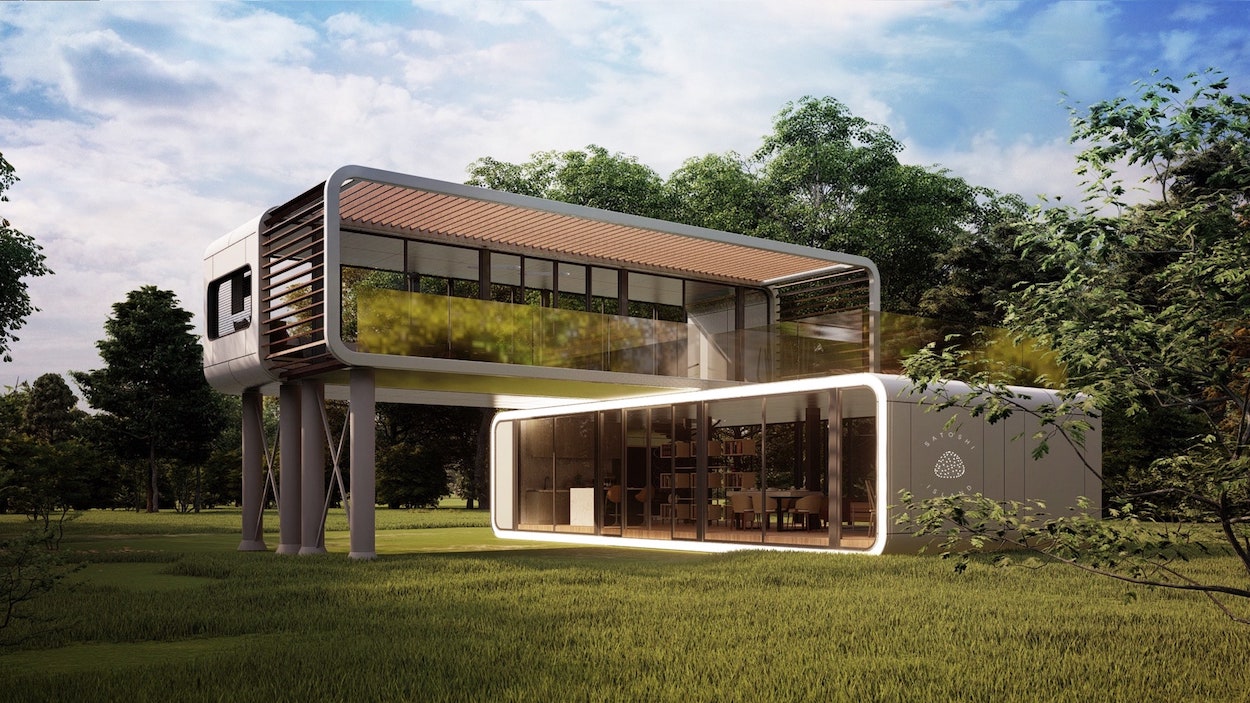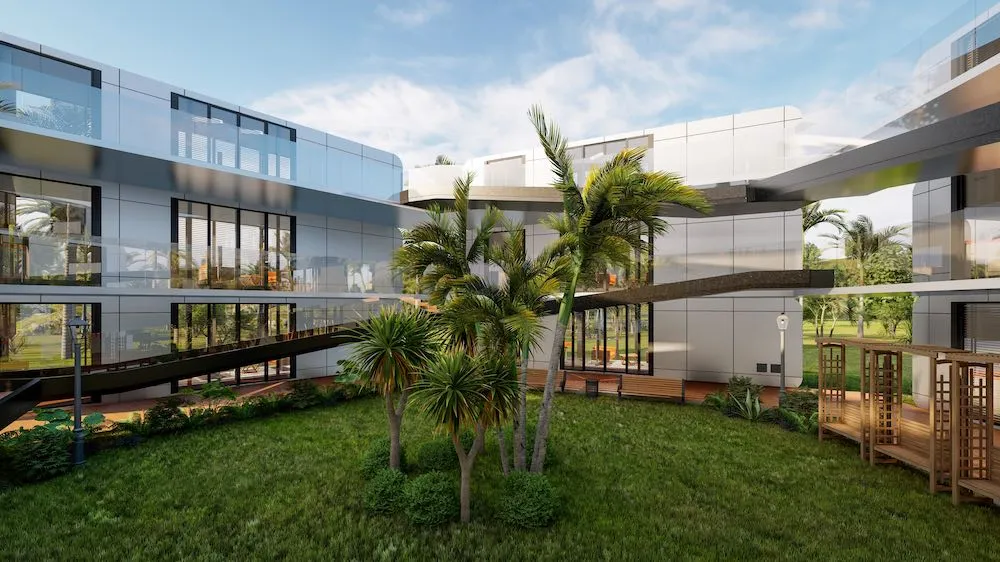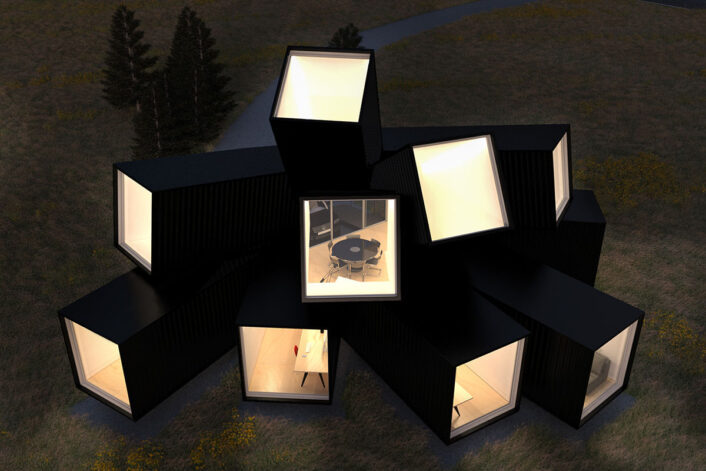Architecture
In the tropics, Bitcoin influences architecture

Satoshi Island is located in Vanuatu, an area between Fiji and Australia.
Drawing courtesy of: News Bitcoin
Set in the middle of the South Pacific Ocean, Satoshi Island is a tiny island with enormous plans for the future. The premise behind the isle’s future lies with Bitcoin; in fact, it is named after the pseudonymous developer of Bitcoin. The small, private island is only 32 million-square-feet and it is owned by Satoshi Island Holdings Limited.
The island’s owners hope that the petite island will become the world’s crypto capital. Satoshi Island Holdings Limited hired the Hong Kong-based architecture firm of James Law Cybertecture to design the island’s real estate offerings of modular homes.

As of earlier this year, the island stood ready for development.
Drawing courtesy of: Architectural Digest
The architects, lead by James Law, are working on plans for a modular development that they call (courtesy of the company’s’ website), “sustainable smart building.” Individual living units can be positioned in a number of different ways… according to what the owner desires.
Units do not have to be arranged as homes; the sustainable glass-walled blocks can be arranged to design sprawling offices also. Literally, there are hundreds of possible variations. Courtesy of Architectural Digest, Law notes, “The style we are building is called cybertecture, a type of architecture that blends the innovations of modular architecture, technologies of sustainable design, and a metaverse-based owner design paradigm to create a city that is truly decentralized.”

The nation of Vanuatu was selected because the “government supports innovation and has crypto friendly laws.”
Drawing courtesy of: Surface Magazine
This year, the island’s land NFTs were released in phases. In total, there are seven collections of land… each representing a different parcel on the island, they will be released one by one. The first collection is comprised of 562 blocks of land; specifically, this area is located on the island’s south wing.
The cubes are built off-island and shipped to Vanuatu; upon arrival, they are put into position and deemed officially ready. The modular prefab-houses were inspired by upscale midcentury-style shipping containers; they start at $60,000 apiece.

Satoshi Island’s developments.
Drawing courtesy of: Surface Magazine
Cybertecture is the term coined by James Law Cybertecture which refers to “architecture that blends the innovations of modular architecture, technologies of sustainable design, and a metaverse-based owner design paradigm to create a city that is truly decentralized.”
Everything will be built with sustainability in mind… starting with the island’s power systems that will utilize renewable energy methods. In addition, green features such as solar panels, glass walls, and specialized waste systems add to the island’s sustainability factory. The architects attest that the modules are the future of urban planning as they minimize construction time and the carbon footprint they leave behind.

All the modular cubes will be made up from sustainable materials.
Image courtesy of: Architectural Digest
Satoshi Island is quite innovative; however it is not the first crypto-settlement to exist. Coincidently, more micro-nations are bound to pop up as interest in this new type of living is on the rise. Liberland, an uninhabited piece of land between the Serbian and Croatian border already has 800,000 applications for residency. The micro-nation is founded by Vie Jedlicka, a Czech politician who insisted Zahn Hadid Architects to devise a “futuristic virtual scheme for the unrecognized city-state.” Plans include NFT trading rooms and tall office towers.
Another similar scheme will take place in El Salvador where the Central American country is planning to build a volcano-powered “Bitcoin City.” The futuristic city will be partly paid for with $1 billion worth of bonds that are backed by Bitcoin.
No one knows for sure whether or not this idea will actually prove successful. However, there is no denying that the crypto community is slowly changing the world as we know it. Only time will tell if traditional architecture will meld into cybertecture. For now, we will take it one small region at a time!


